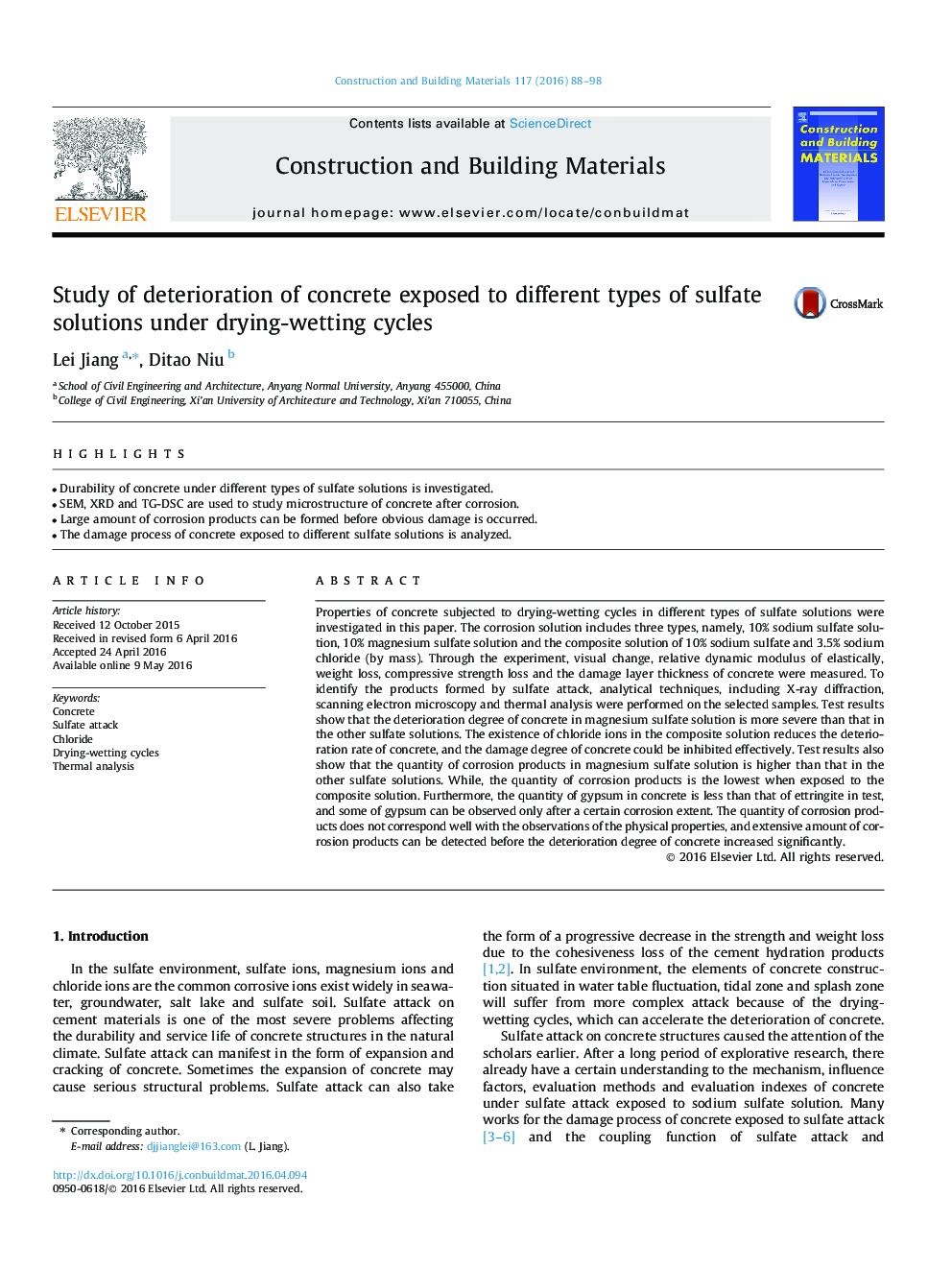| Article ID | Journal | Published Year | Pages | File Type |
|---|---|---|---|---|
| 256109 | Construction and Building Materials | 2016 | 11 Pages |
•Durability of concrete under different types of sulfate solutions is investigated.•SEM, XRD and TG-DSC are used to study microstructure of concrete after corrosion.•Large amount of corrosion products can be formed before obvious damage is occurred.•The damage process of concrete exposed to different sulfate solutions is analyzed.
Properties of concrete subjected to drying-wetting cycles in different types of sulfate solutions were investigated in this paper. The corrosion solution includes three types, namely, 10% sodium sulfate solution, 10% magnesium sulfate solution and the composite solution of 10% sodium sulfate and 3.5% sodium chloride (by mass). Through the experiment, visual change, relative dynamic modulus of elastically, weight loss, compressive strength loss and the damage layer thickness of concrete were measured. To identify the products formed by sulfate attack, analytical techniques, including X-ray diffraction, scanning electron microscopy and thermal analysis were performed on the selected samples. Test results show that the deterioration degree of concrete in magnesium sulfate solution is more severe than that in the other sulfate solutions. The existence of chloride ions in the composite solution reduces the deterioration rate of concrete, and the damage degree of concrete could be inhibited effectively. Test results also show that the quantity of corrosion products in magnesium sulfate solution is higher than that in the other sulfate solutions. While, the quantity of corrosion products is the lowest when exposed to the composite solution. Furthermore, the quantity of gypsum in concrete is less than that of ettringite in test, and some of gypsum can be observed only after a certain corrosion extent. The quantity of corrosion products does not correspond well with the observations of the physical properties, and extensive amount of corrosion products can be detected before the deterioration degree of concrete increased significantly.
